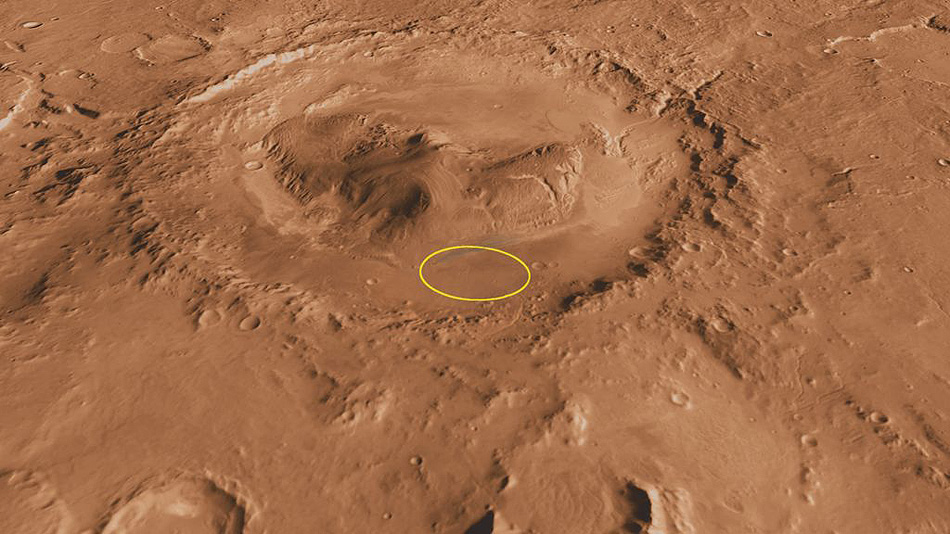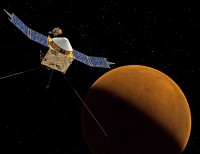This oblique, southward-looking view of Gale crater shows the landing site and the mound of layered rocks that NASA’s Mars Science Laboratory will investigate. The landing site is in the smooth area in front of the mound (marked by a yellow ellipse, which is 12.4 miles (20 kilometers) by 15.5 miles (25 kilometers)). (Credit: NASA)
Home This oblique, southward-looking view of Gale crater shows the landing site and the mound of layered rocks that NASA’s Mars Science Laboratory will investigate. The landing site is in the smooth area in front of the mound (marked by a yellow ellipse, which is 12.4 miles (20 kilometers) by 15.5 miles (25 kilometers)). (Credit: NASA) This oblique, southward-looking view of Gale crater shows the landing site and the mound of layered rocks that NASA's Mars Science Laboratory will investigate. The landing site is in the smooth area in front of the mound (marked by a yellow ellipse, which is 12.4 miles (20 kilometers) by 15.5 miles (25 kilometers)). (Credit: NASA)
This oblique, southward-looking view of Gale crater shows the landing site and the mound of layered rocks that NASA’s Mars Science Laboratory will investigate. The landing site is in the smooth area in front of the mound (marked by a yellow ellipse, which is 12.4 miles (20 kilometers) by 15.5 miles (25 kilometers)). (Credit: NASA)



